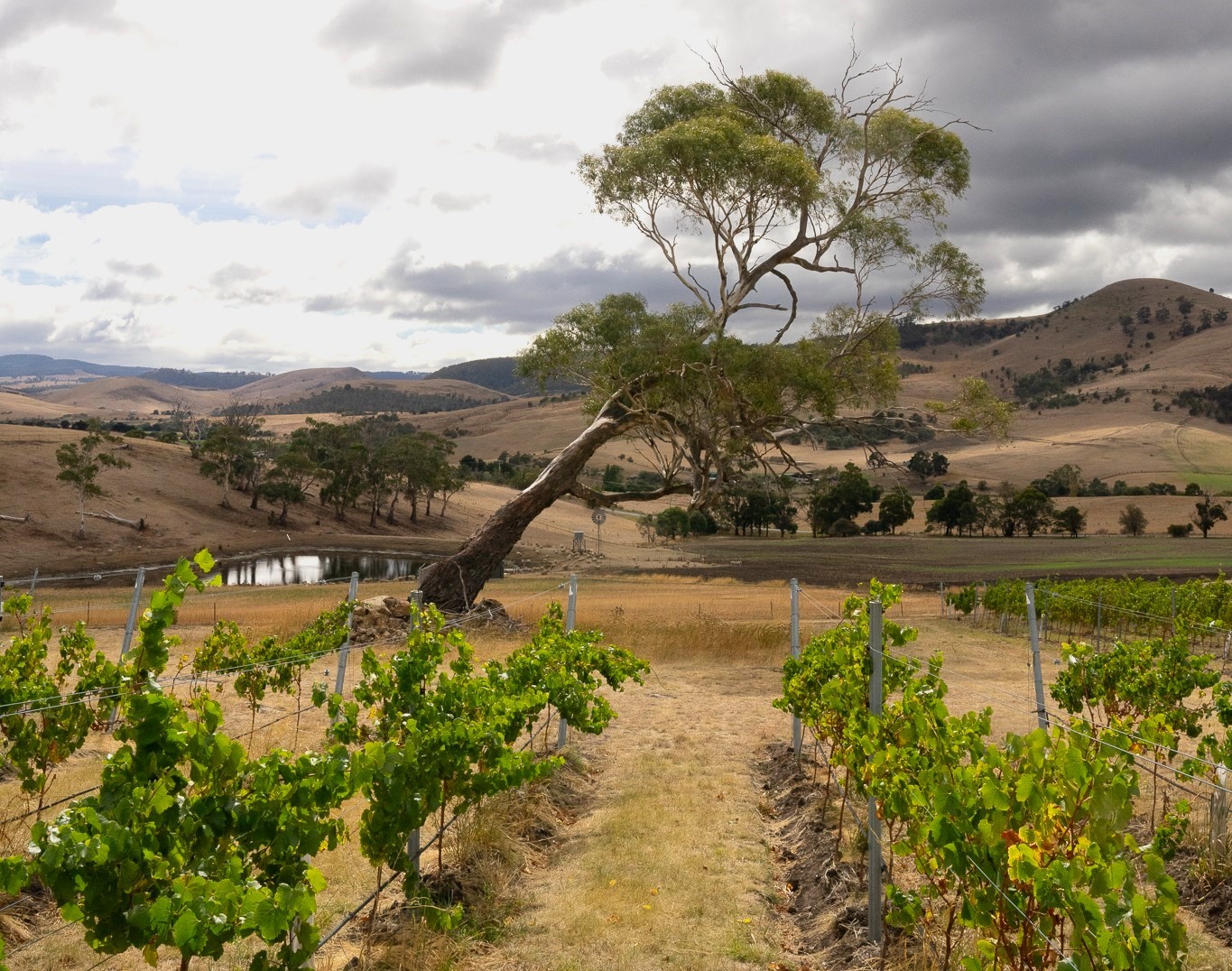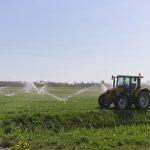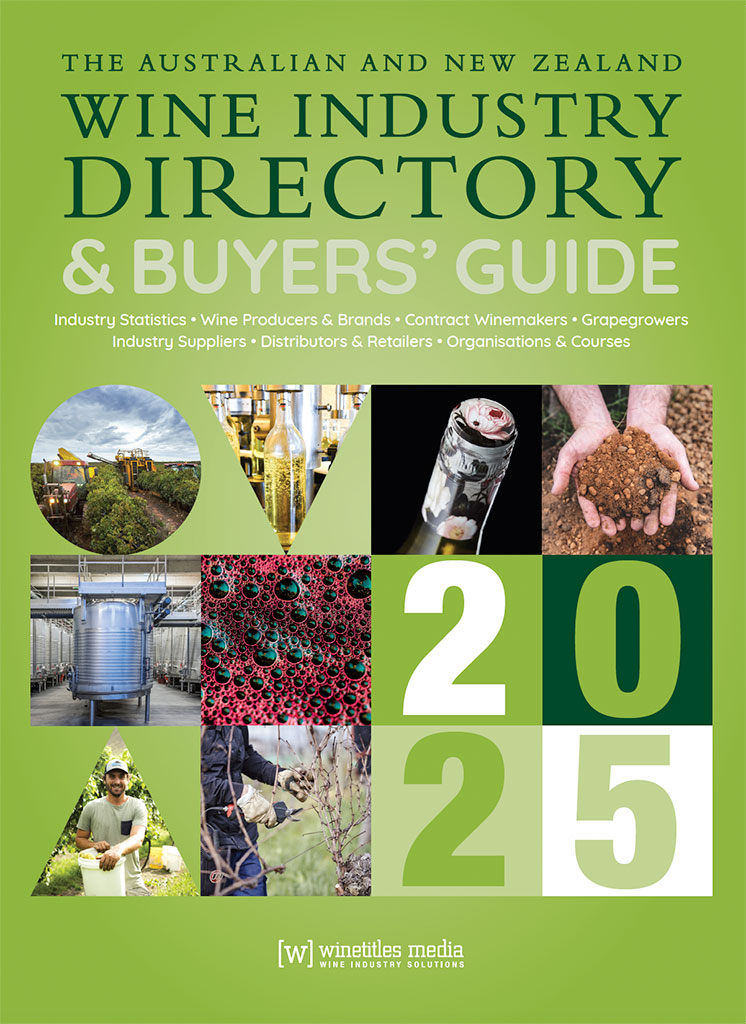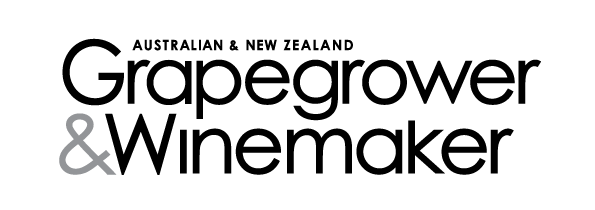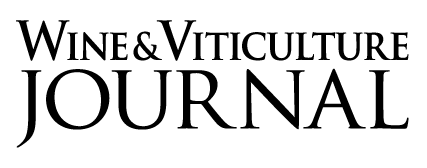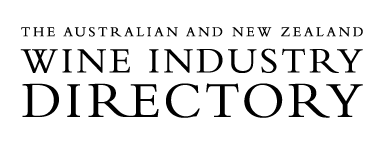Sisu Wines’s vineyard in the Coal River Valley. Image courtesy Sisu Wines
By Meg Riley
Winegrape growers in south-east Tasmania were met with a rude shock when the Greater South East Irrigation Scheme was snubbed in this year’s federal budget. Journalist Meg Riley spoke to growers and producers in the area to hear how they are grappling with the resultant change in plans, and the risk their businesses face by having growth stifled at such a critical time in Tasmania.
Viticulturists and winemakers in south-east Tasmania have had to halt their expansion plans after a proposed irrigation scheme failed to receive the expected funding in the Federal Government’s 2024/25 budget.
The Greater South East Irrigation Scheme (GSEIS) was calling for $150 million of government funding in order to improve the existing irrigation scheme. This funding was expected to ensure water surety for farmers in the south east of Tasmania by accessing water from Lake Meadowbank, thus keeping water affordable and abundant and avoiding the need to encroach on Hobart’s much pricier treated drinking water.
Located in the south-east of Tasmania and directly affected by this scheme is the winegrowing area of Coal River Valley, one of the seven sub-regions of Tasmania’s Geographical Indication. According to Wine Tasmania, the Coal River Valley represents an annual economic contribution of $80 million, plus wine tourism. It accounts for $9.7 million in farmgate value (as of 2023), with a vineyard area of around 528ha, which is equivalent to $55 million in vineyard capital investment and investment in winery, packaging and cellar door infrastructure. The Coal River Valley has an average annual production of around 2.6 million bottles, with an approximate retail value of $89 million, and it employs roughly 767 full-time equivalent workers.
“Viticulture is a significant and growing contributor to south-east Tasmania, and the Australian Government’s lack of support for the Greater South East Irrigation Scheme as part of the 2024/25 budget announcement has caused considerable concern for affected wine businesses,” said Sheralee Davies, chief executive officer of Wine Tasmania.
Andrew Kneebone, CEO of Tasmanian Irrigation, explained that the GSEIS was designed to meet farmers’ demands for new water, and address reliability and cost concerns surrounding irrigation.
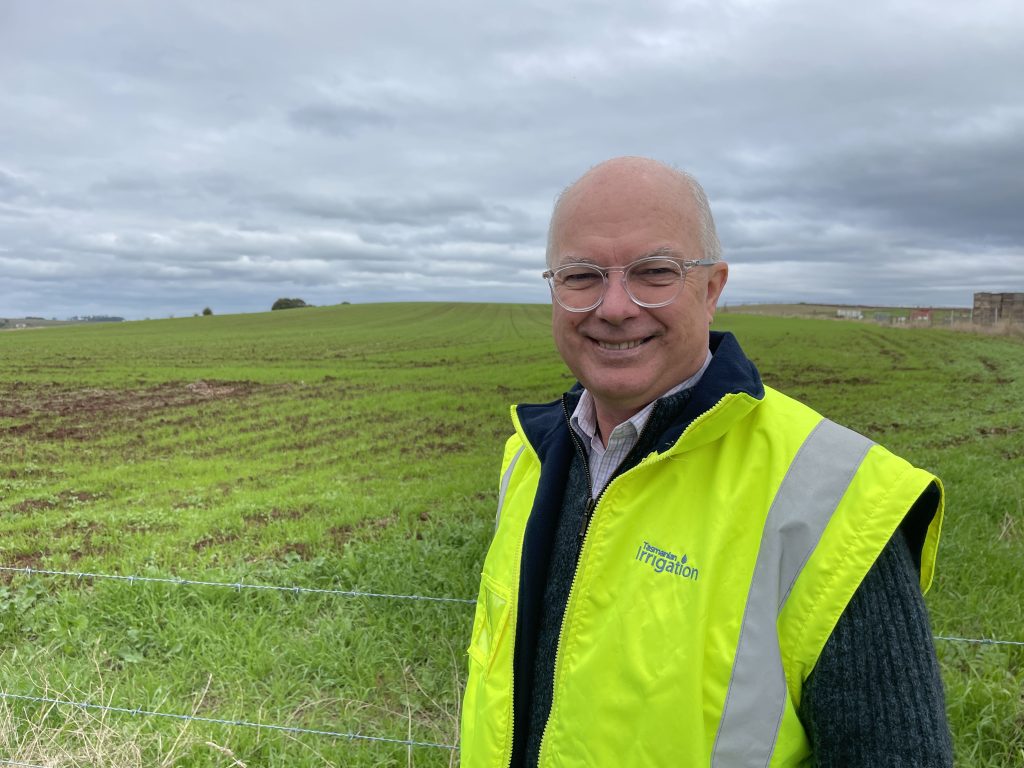
“The Greater South East Irrigation Scheme has the capacity to deliver 37,200ML of high surety water that would be the catalyst for conversion to higher value activity in what has traditionally been one of the driest areas of Tasmania,” said Kneebone.
“There is no question about the level of demand for the scheme. We have over 230 binding contracts to purchase new water entitlements, in addition to existing water entitlement holders in the south east.
“The risk if the project is not funded is that the South East region would become uneconomic for irrigated agriculture, resulting in an economic loss to the state, handback of water entitlements, and undermining the current and future significant investment in the high value horticulture and viticulture in the region.”
Who does it affect?
The lack of funding allocated to the improvement of the scheme came as a rude shock to many of the winegrape growers in south-east Tasmania when the federal budget was released in May.
Alex van Driel is one such grower. He is the viticulturist at Nocton Vineyard, which is situated at the heart of the Coal River Valley. Winegrapes account for 35ha of the property’s total 580ha, and van Driel is currently growing 10 different varieties. The property has a holding dam, however van Driel explained that it is still dependant on water from the Coal River to irrigate.
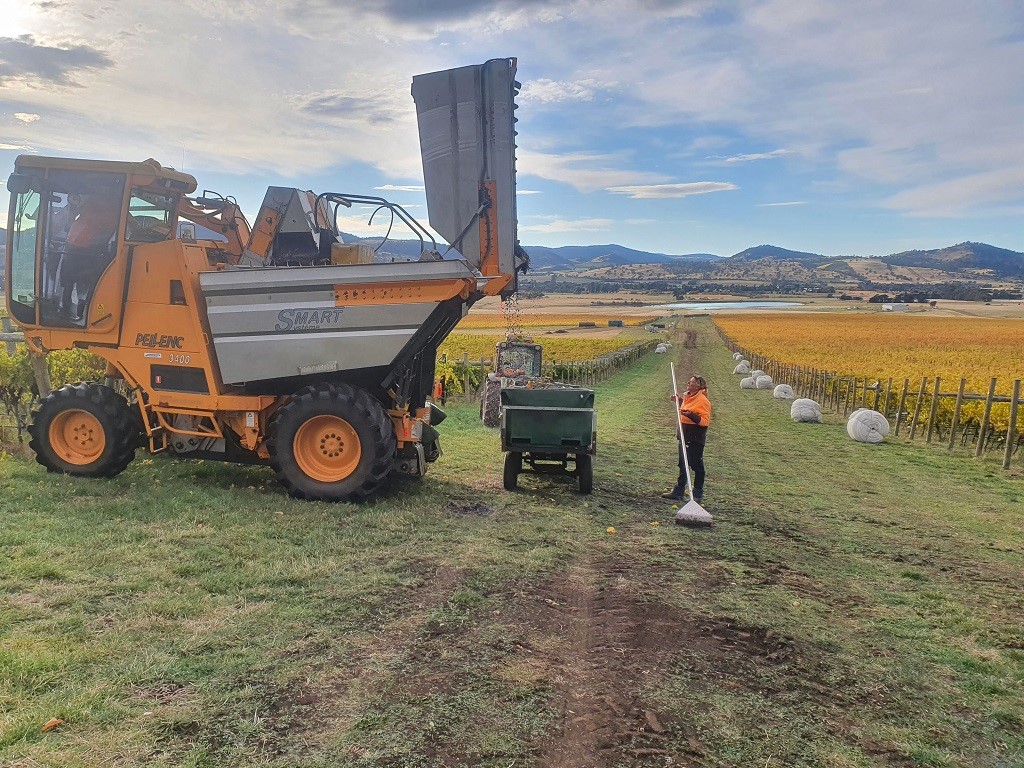
“We’re actually a Stage One water user, so that means we can only solely pump out of the Coal River, and we have a holding dam that holds about 100ML of water,” said van Driel.
One of the issues with this arrangement is that the Coal River water can become incredibly saline further upstream, which in turn affects the water that Nocton relies on to irrigate.
“During dry periods, particularly further down the river where we take the water out, [we] can have levels of salt between 1,100ppm-1,800ppm of salt, if not more, on occasion.”
“The other problem that we have with Stage One water is that they can reduce the allocation way down and not provide water at all through that scheme. If we didn’t have a holding dam, then we wouldn’t be able to continue irrigating our vineyard, basically.”
Although they have never had water allocations cut off entirely, van Driel said there have been times where the allocations have been heavily reduced.
“They have had water restrictions over a number of dry years, and they can restrict it down to 5% intake per week on your allocation. We have 167ML of [allocated] water, but Stage One providers are probably the ones that are getting affected most of all, just purely from salt levels.”
One of the outcomes van Driel was hoping for under the proposed scheme was extra water to see them through the drier months, and to protect the saline levels of the water they were allocated.
“We wanted at least 100ML of summer water and 20ML of winter water just to get us through that period, still [to] put it into the dam.”
Van Driel estimated that this water would only be around 40ppm salt, which would eliminate the risk of adding additional salt to the land. A build up of sodium levels caused by high salinity water can inhibit how the vines absorb nitrogen and phosphate, and if it reaches a certain point, van Driel said this could even be detected in the berries.
“If it gets to such levels in the vineyard, you can actually taste salt in the grapes,” he said.
The current scheme
There are three stages to the current irrigation system. Stage One supplies the Coal River District, predominantly from the Craigborne Dam. Stage Two supplies the towns of Richmond, Dulcot and Cambridge with water from TasWater and the Coal River, which is pumped into the Daisy Banks Dam and distributed around the district. Stage Three services Tea Tree, Campania, Orielton, Pawleena, Penna, Sorell and Forcett, with water sourced from the River Derwent, which is sourced by TasWater. Both Stages Two and Three rely on water that is processed and treated by TasWater.
“Stage Three water is direct water, so that’s almost guaranteed water, except I think about three years or four years ago, they restricted that by 50%,” said van Driel. “That was supposed to be 100% guaranteed water, but that particular year they had issues with supplying water.”
Through the improvement of the scheme, Nocton had hoped to have increased access to better quality water, which would allow them to use this water for activities such as spraying, rather than having to rely on town water.
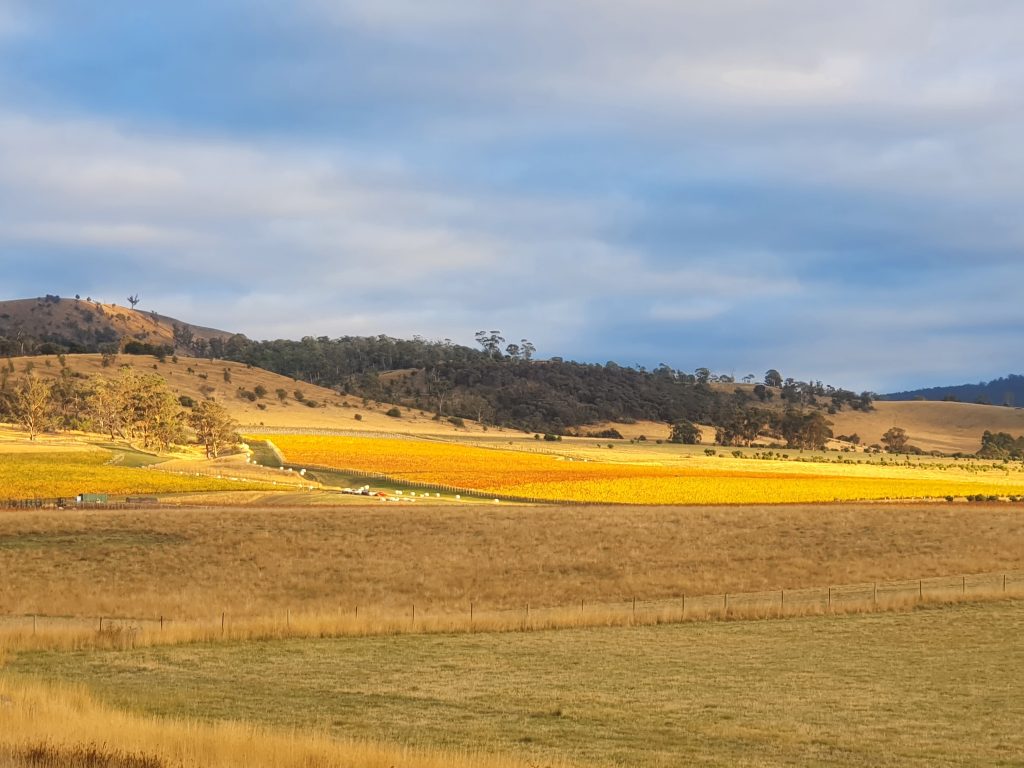
“We could also probably think of expanding the vineyard,” said van Driel. “Because of the size of the property we could quite easily fit another 50 or 100ha in here and buy more water if it became more available. Currently, we’ve just got enough in there for our current needs.
“We’re now looking at another six years of waiting, prior to getting new water.”
Having the room to grow but not the means to irrigate an expansion is stifling to the business, and van Driel explained that this six-year wait was something that the owners or other investors in the company had to consider prior to any new investments.
“Particularly [for] Tasmania, there’s a growing market for our cool-climate wines: we are just starting to get discovered on the mainland and overseas markets as being a good source of Pinot, Chardonnay and Rieslings. And we can’t develop our [business] to be able to sell more wine in those markets. It’s a huge restriction on the business itself.”
This is especially frustrating for the company at this point in time, because investors are just beginning to identify the promise of winegrape growing in Tasmania, and van Driel said they can see this expansion happening around them.
“We know that’s happening, because there’s a lot of other larger companies, BWS and a lot of other companies investing in Tasmania at this point in time, because they know there’s potential there for export, both into overseas markets and also onto the mainland.
“It’s just one of those things, if you can’t get water, you can’t do any expansion, and there’s going to be little investment into the vineyards in and around the Coal [River] Valley if you can’t get water.
“There has been disappointment because it certainly delays any sort of business plans that we want to proceed [with], so that means we’re now going to be restricted to being 35ha of vineyards for the next six years.”
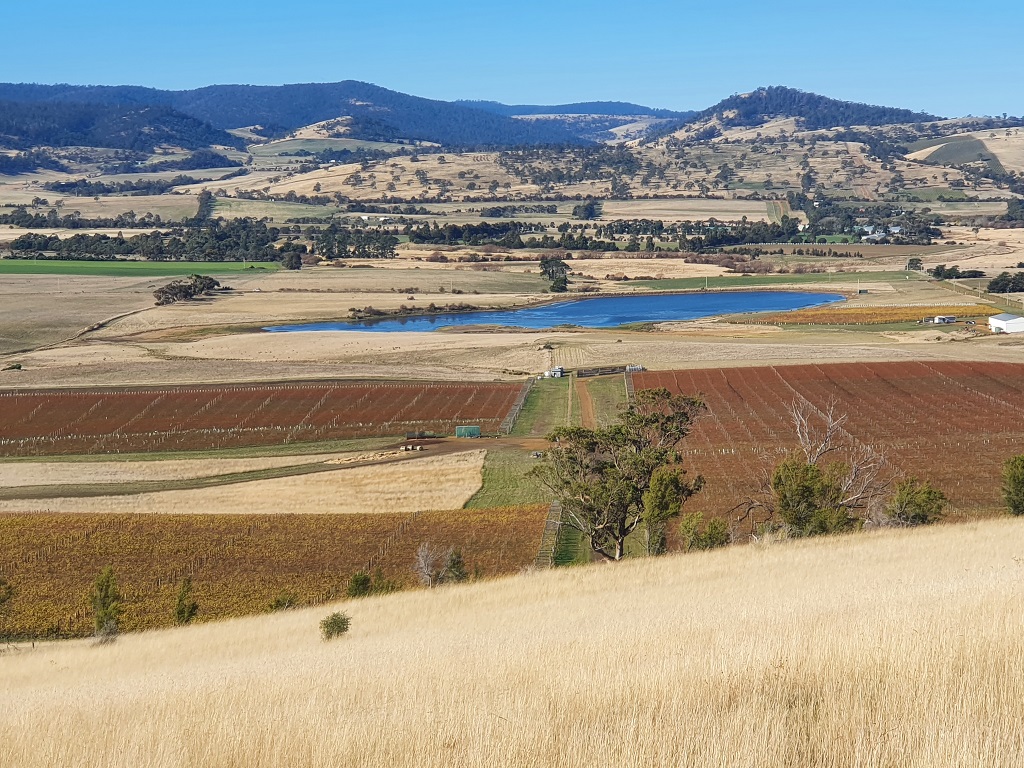
Critical conditions
After Adelaide, Hobart is the second-driest capital city in Australia, something which van Driel suggested many people perhaps aren’t aware of.
“The further we go from Coal [River] Valley out to the east coast, the rainfall drops off significantly, and therefore reliance on an outside irrigation and clean water source becomes priority really, if you want to grow anything.”
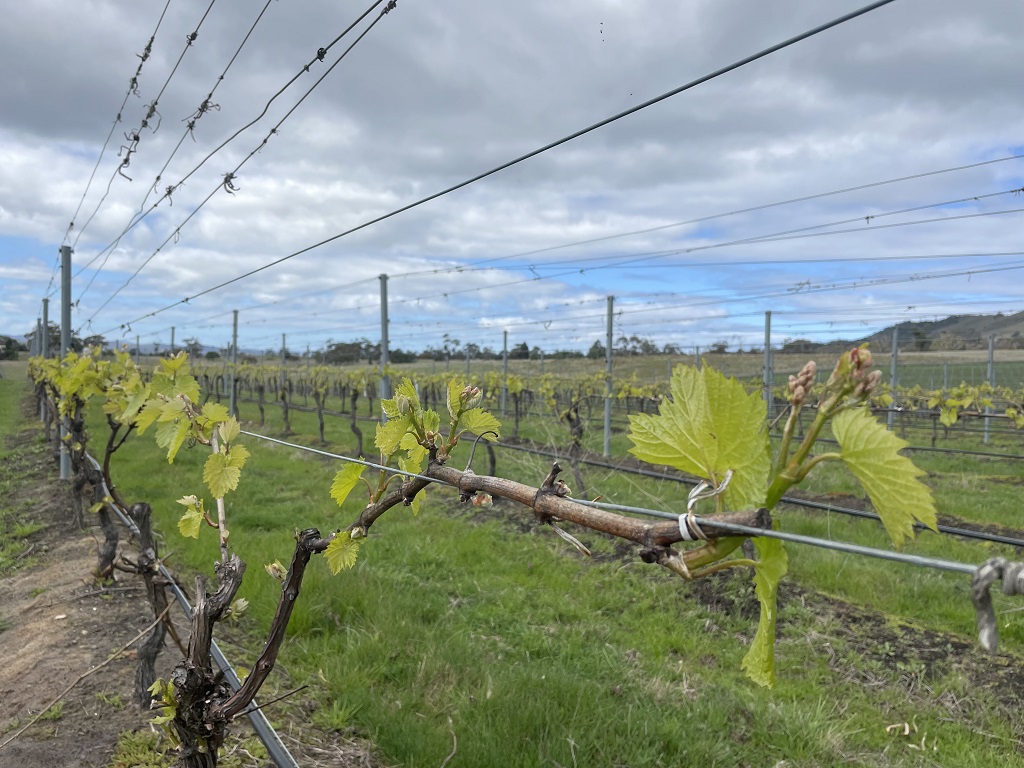
Even for irrigators with secure access to adequate water supply, the conditions in south-east Tasmania are relatively dry, and it only takes one year of low rainfall for growers to start feeling anxious.
“This year is heading to be a very, very dry year,” said van Driel. “So it looks like our main supply dam, Craigbourne Dam, hasn’t had a lot of inflow at this point in time.”
The Craigbourne Dam typically holds around 12,500ML, and van Driel said that the dam was down to around 7,500ML heading into the coming season. If rainfall is scarce both this year and next, van Driel said conditions could be “absolutely critical” for irrigators on Stage One and Two of the scheme.
It’s not just winegrapes that are affected by the scheme – van Driel noted that many other businesses growing fruit in the area were also reliant, not just on an assured quantity of water but on the quality of it.
“Anyone who wants to grow cherries in the valley will definitely need water that’s under 600ppm salt,” said van Driel.
“We lease part of the property off to a seed company and they’re at the moment bringing Stage Three water across from another property to do what they want, because they know that Stage Three water is direct water that has low salt levels.”
High demand for water, which often occurs in the event of insufficient annual rainfall, pushes more irrigators to exercise their water entitlements, which in turn reduces the amount of water in the scheme’s holding and increases its salinity.
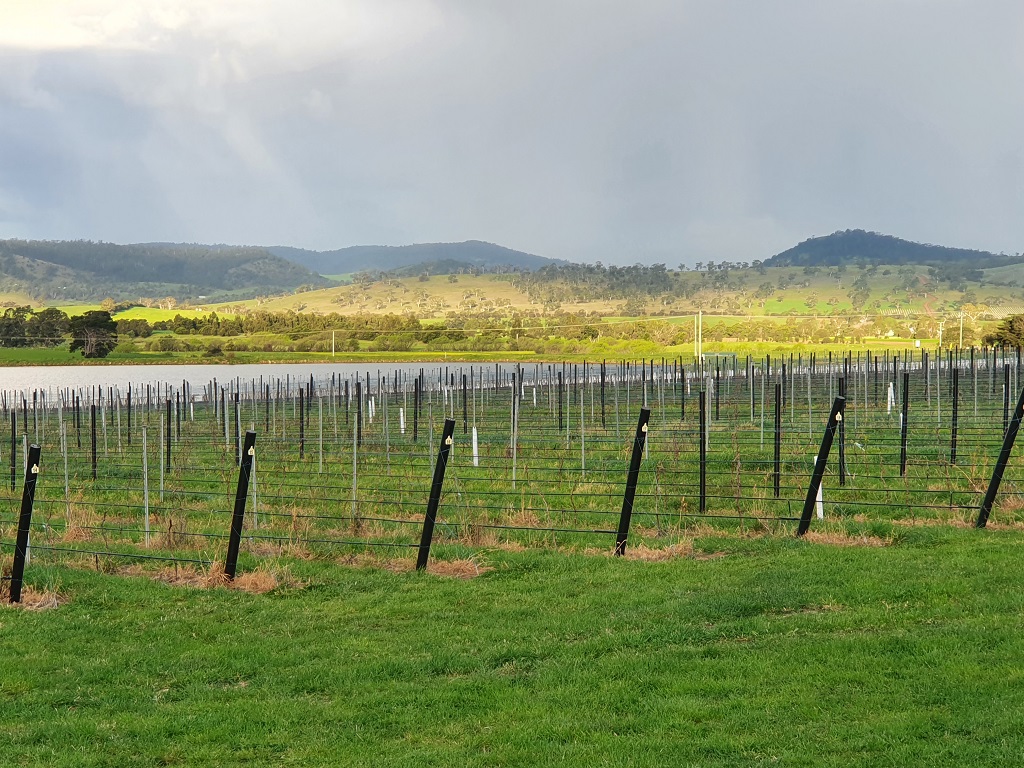
What can be done?
For properties such as Nocton Vineyard which are lucky enough to have a holding dam, even keeping water in their dam does not protect them from increased salinity in the water.
“Even if you do put fresh water in there, the salt water is actually heavier than the fresh water, so in time you build up the levels of salt in your holding dams,” said van Driel.
Because the salt water is heavier, the fresh water sits on top, meaning the water lost to evaporation is disproportionately fresh water.
“If you’ve just got a flat surface on a dam, and it’s [roughly] five hectares of evaporation surface, as soon as you get a wind in there and you get a major ripple through it, you could end up with 10ha of surface area, which is double the evaporation potential.”
Tackling the rate of evaporation is one of the ways to minimise the salt risk, although van Driel explained that none of the current methods were fail-safe.
“They’ve tried balls and all sorts of things to slow the water down, but I think the only other thing you can do really is put windbreaks at the back of the dam and try and slow the air movement over the top of the dams.”
Ideally, van Driel said the proposed improvements to the scheme could eliminate Nocton’s need to regularly pump to and from the dam.
“We were also hoping through the new irrigation scheme that there would be enough pressure to actually directly deliver that water into the vineyard without having to pump it,” he said.
This would reduce costs as well as electricity, as Nocton is currently pumping water from the river into the dam, and then again out of the dam and into the vineyard.
“We would end up with probably a $5,000 cost saving from [not pumping] the river to the dam, and we’d probably save at least another $8,000 from the dam to the vineyard itself.”
With all this in mind, van Driel said they are hoping to reach the ever-listening ears of politicians.
“If they want the food bowl of Tasmania to go ahead, then we definitely need this new irrigation scheme, not only for vineyards and other perennial crops, but also for vegetable growers in the area.”
“We’ve got enormous potential here. It’s such a big property that quite easily you could probably put another 100-150ha in here. That would require another 400ML-600ML of water just for this property, on top of our existing 167ML.”
Crucial stage for young vines
Jake Sheedy is a winemaker at Sisu Wines in the Coal River Valley, just north of Campania, a business which he acquired during the pandemic and developed into 25ha of vines. Along with the property, Sheedy purchased 5ML of Stage One water entitlements, and is currently building a 300 tonne winery to fulfil both Sisu Wines’ processing requirements as well as some local contract processing.
Although the Stage One water that Sheedy uses is not subject to price increases in the same way as Stage Two and Three, this does not mean that Stage One water is unaffected by price increases.
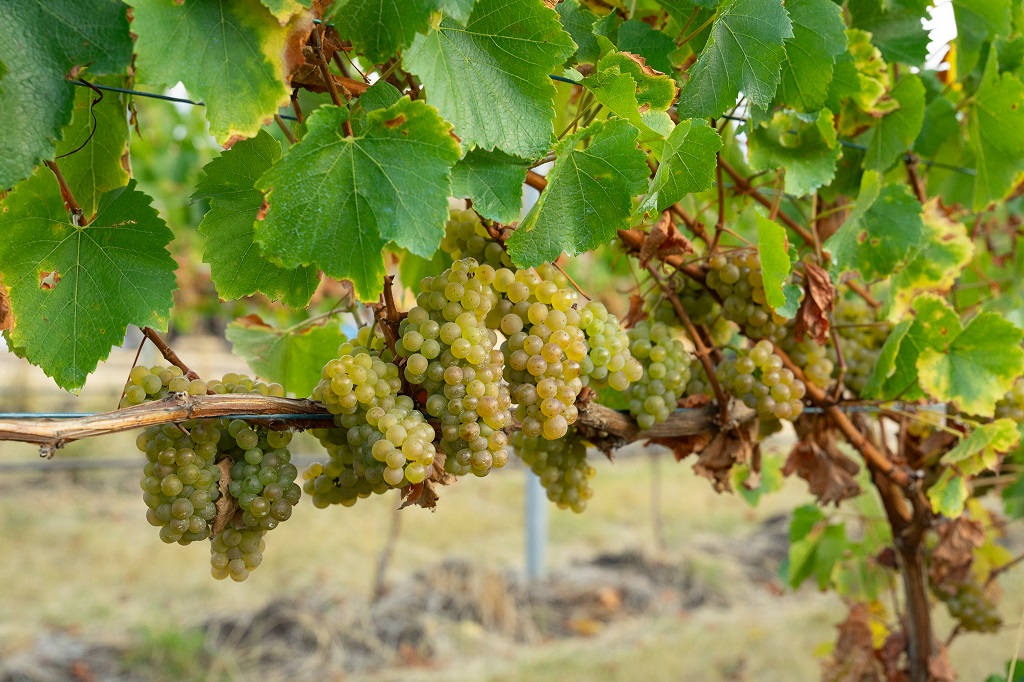
“The cost of water for Stage Two and Three is currently sitting about like $200/ML, however, TasWater has indicated that that could go up as high as $1,200/ML, which is astronomical.”
Sheedy noted that although this price is not fixed and the expected price is likely to be somewhere in the middle of these two figures, it would still be a drastic increase in cost.
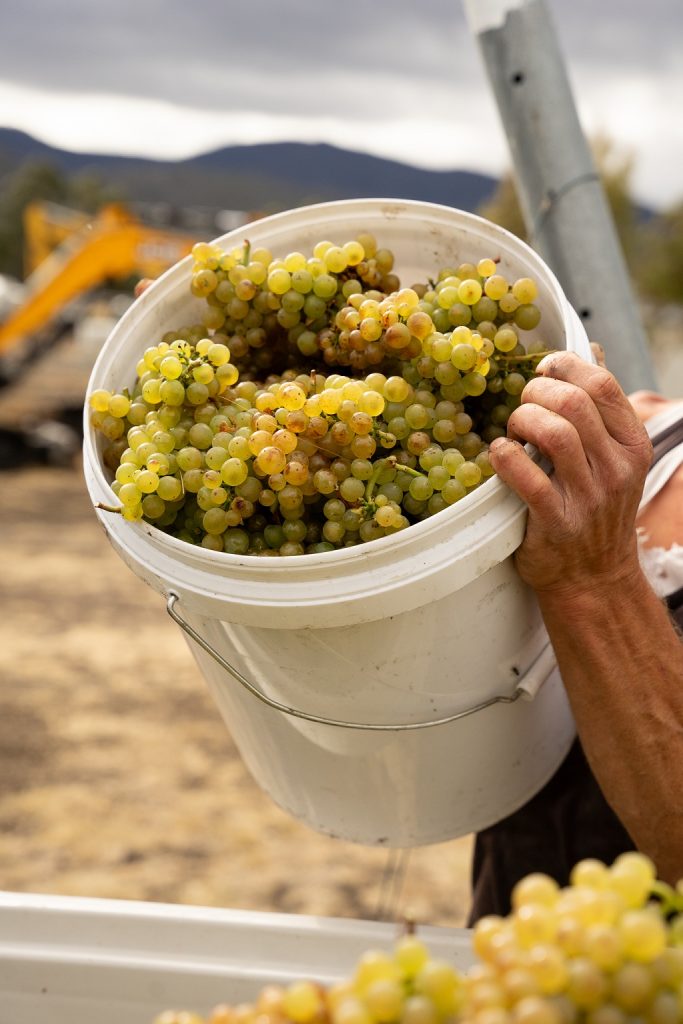
“We’re on Stage One, so our water cost doesn’t increase. Where it is going to impact us is due to the dry year, the dam hasn’t filled. They’re currently talking about how much water they’re going to release for next season, and it might [only] be 75%.
“People that have access to Stage One and Stage Three, for example, they’re not going to use the Stage Three water, because it’s going to cost them a lot more than Stage One. So they will be using more of Stage One, in a resource that’s already depleted.
“It’s going to be a double whack, unfortunately. Our irrigation water quality will definitely drop, and the surety of the water is a huge concern. Our oldest vines are three years old, and our youngest vines were planted last year, so you need to be doing a lot of small, but regular irrigations.
Failing to adequately irrigate these young vines could cause serious problems for Sheedy, and if the rainfall conditions do not improve, his vineyard could be facing a difficult outlook.
“It could be potentially pretty bad,” said Sheedy. “Probably not this coming year, but if we have another dry year, then the following year, our youngest vines – 12ha, they could definitely be in a pretty compromising situation.”
“So far, we’ve used about 1.7ML per hectare. We use the majority of the water for vineyards, but we’ve also got 4ha of revegetation area, so we’ll be using that to help get those trees established.”
They have planted as much as possible on drought and salt tolerant rootstocks, and Sheedy said they are doing all they can to prepare in the circumstances.
“We’ve just spent a fair whack of money on installing water probes around the vineyard and a good weather station, with the idea [that] with these tough few seasons coming ahead, try and minimise the amount of irrigation that we can actually put out and keep the vines happy and healthy.”
The winery itself also requires water, which Sheedy plans to source through rain catchment.
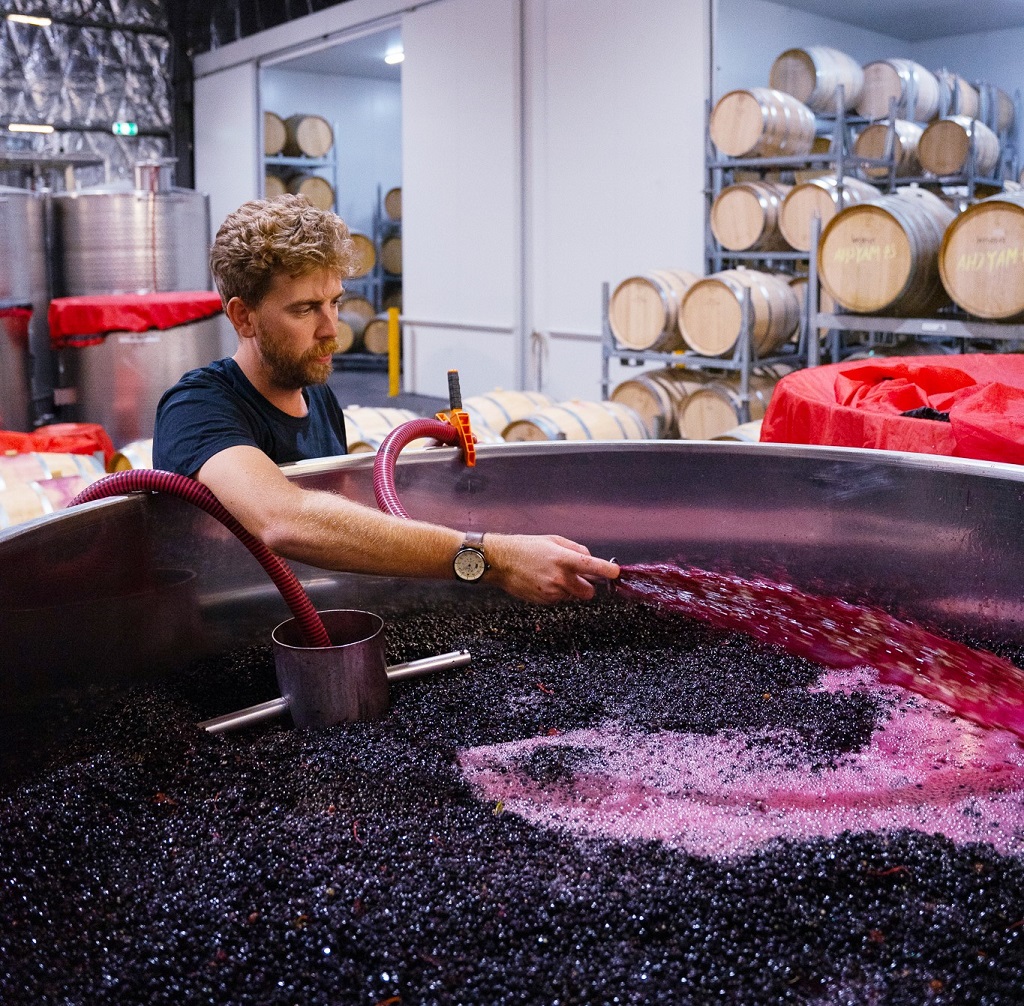
“We aren’t connected to town water here, so it’s not an option to use anything else.”
When Sheedy first moved to the Coal River Valley three years ago, he said everyone was operating as though the GSEIS was a sure thing.
“Realistically, I assumed that we would have been on the new scheme by now, at the latest a year from now, but nothing fast happens in Tassie,” said Sheedy.
The expansion plans that Sheedy was ready to launch into are now on pause until there is clarity and surety on what his future water situation could be.
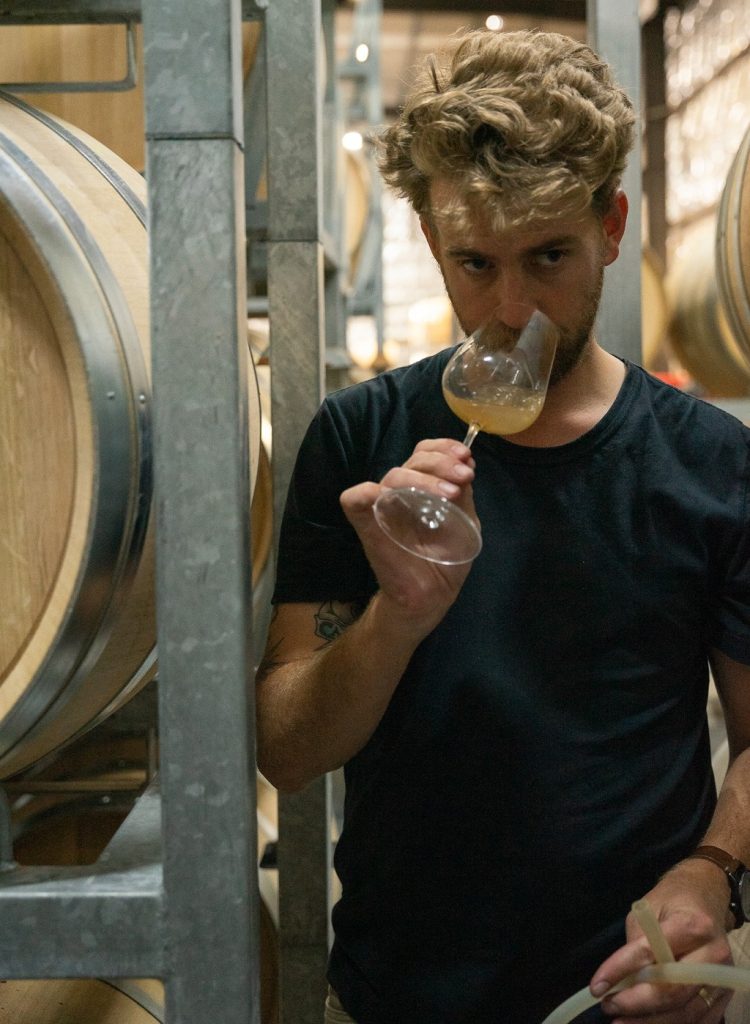
“I’m holding back on doing any further developments until this is resolved,” he said. “Even if we can get more water from the existing scheme, which may become available, it’s still very low surety, and the quality isn’t quite there.
“We were going to develop another 7ha next year, after the winery was done. Just for the economy of scale: if you’ve got tractors and spray rigs and all the rest of it, it’s good to have them busy. Right now in our area with wind, our spray windows are somewhat tight for 25 hectares. But if we planted a little bit more than we could justify getting another spray rig.”
Sheedy has been spearheading lobbying for the Coal River Valley wine sector, meeting with politicians such as Tanya Plibersek, Minister for the Environment and Water, to push for funding for the GSEIS. He has been collecting data from other growers in the valley to demonstrate how many people are employed by the sector and how much water they use.
“My plan was to hopefully take that to Murray Watt, but we’ll see if he’ll listen to me,” said Sheedy.
“This doesn’t help the cause, but I’m sympathetic as well that it was a shoestring budget, and there’s a lot of really needing, worthy areas that have also got knocked back.
“Although area under vine is growing rapidly in Tasmania, it’s still a fraction of Australia’s crush,” Sheedy explained. “A very small amount of Tasmanian wines get exported – if Tasmania could start exporting wine as well, then that would be a huge win economically, for not just Tasmania, but Australia. So there’s a really good opportunity here to hopefully fortify Coal River.
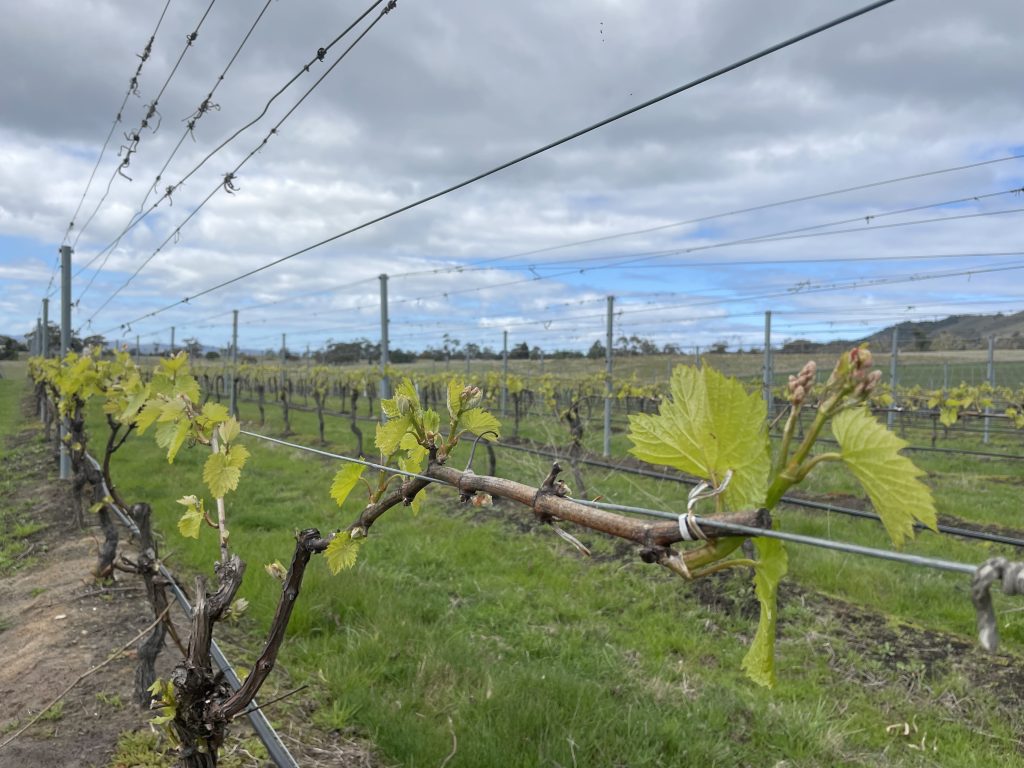
“There’s been a lot of lobbying statewide, and there’s a lot of people in huge support for it statewide. But Tasmania is a little bit more isolated, and we’re not exactly banging on Canberra’s doorstep, either.
“Coal River [Valley] is a great grapegrowing part of Tasmania – because it is that little bit drier we have lower disease pressure, so yields are a little bit more consistent, and it’s that little bit warmer as well.”
Editor’s note: Since the publication of this article, Murray Watt has been replaced as the Minister for Agriculture, Fisheries and Forestry by Tasmanian MP Julie Collins, a move which has renewed hopes for change among Tasmanian growers.
This article was originally published in the August 2024 issue of the Australian & New Zealand Grapegrower & Winemaker. To find out more about our monthly magazine, or to subscribe, click here!
Are you a Daily Wine News subscriber? If not, click here to join our mailing list. It’s free!

